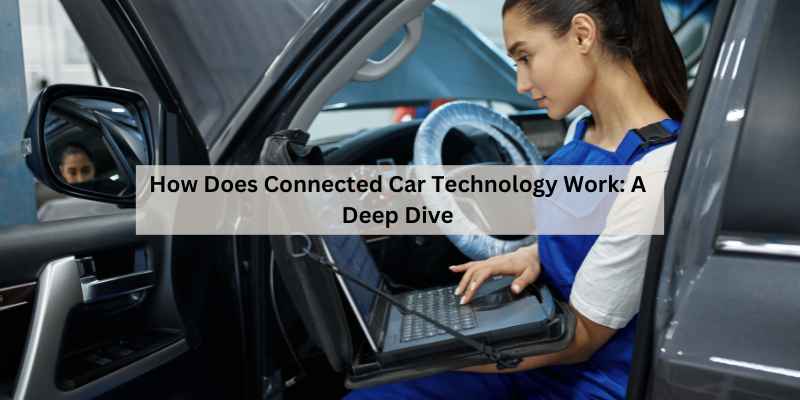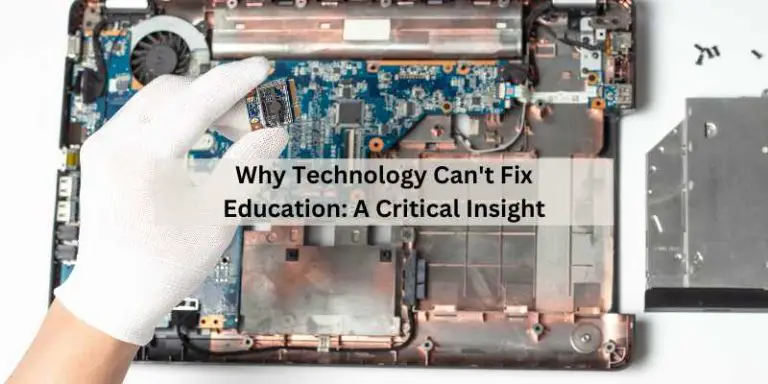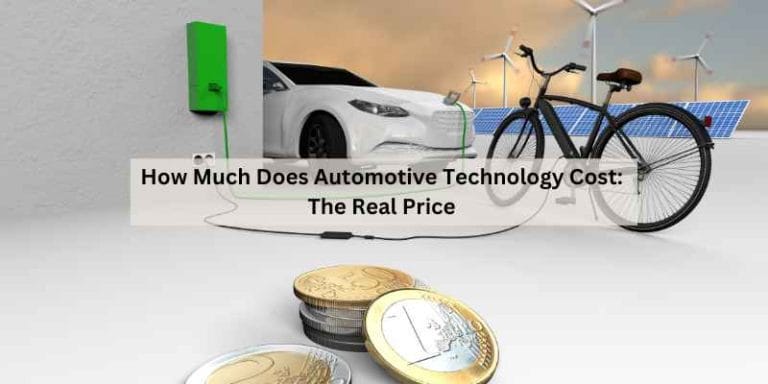How Does Connected Car Technology Work: A Deep Dive
Connected car technology works by equipping vehicles with internet connectivity and onboard sensors, which generate data such as vehicle location, speed, acceleration, fuel efficiency, engine performance, and other operational parameters. This data is then shared with devices both inside and outside the car, allowing for remote operation, security functions, and the exchange of critical information between connected vehicles.
Connected car technology has revolutionized the automotive industry by enabling vehicles to access the internet and share data with various devices. Through internet connectivity and onboard sensors, connected cars generate valuable information about their location, speed, fuel efficiency, and more.
This data can be utilized for remote operations, security features, and exchanging crucial information between connected vehicles. With advancements in technology, connected car technology has become a significant aspect of modern transportation, offering numerous benefits and possibilities for enhanced safety, convenience, and efficiency on the road. In this blog, we will delve deeper into how connected car technology works and explore its impact on the automotive industry.
The Era Of Connected Cars
The era of connected cars has brought about a significant transformation in the automotive industry. The basics of vehicle connectivity involve the integration of internet connectivity and onboard sensors to enable data generation and transmission. Over the years, connected car technology has evolved to include various smart functions such as remote vehicle operation and enhanced security features.
Connected car data refers to the information gathered by vehicles equipped with internet connectivity and onboard sensors. This data encompasses a wide range of details including vehicle location, speed, acceleration, fuel efficiency, and engine performance. Connected vehicles are essentially equipped with internet access, enabling them to share data with devices both inside and outside the car.
Furthermore, connected vehicles are capable of communicating with each other, allowing the exchange of critical information regardless of their visibility to each other. The technology inside a connected car typically consists of embedded or tethered systems, empowering them to download updates and leverage smart features.
Key Components Of Connected Car Systems
Connected car technology operates through a combination of onboard sensors and IoT devices that collect and transmit vehicle data. Onboard sensors capture information such as location, speed, and engine performance, while IoT devices enable data transmission and communication with external systems. Telematics plays a crucial role in facilitating the exchange of data between the vehicle and external networks, allowing for real-time monitoring and analysis. This seamless integration of components enables connected car systems to provide valuable insights for enhanced safety, maintenance, and overall vehicle performance.
Communication Protocols In Connected Cars
Connected car technology operates through communication protocols that enable vehicles to share data with each other and external devices. These protocols allow for the exchange of information such as location, speed, and performance, enhancing the overall functionality and safety of connected cars.
| Communication Protocols in Connected Cars |
| Connected cars use various communication protocols to exchange data between different components. One of the most important protocols is Vehicle-to-Vehicle (V2V), which enables cars to share information with each other, such as speed, position, and direction. This communication system can improve safety on the road, as cars can warn each other about potential hazards and avoid accidents. Another protocol is Vehicle-to-Infrastructure (V2I), which allows cars to communicate with roadside infrastructure, such as traffic lights and signs. This technology can help reduce traffic congestion and improve traffic flow. Both V2V and V2I rely on wireless communication technologies, such as Wi-Fi and cellular networks, to transmit data between different devices. |
Role Of Internet Connectivity
Connected car technology utilizes internet connectivity and onboard sensors to gather and transmit data such as vehicle location, speed, and engine performance. This data is crucial for enhancing driving experiences and enabling smart functions like remote vehicle operation and security features.
There are two primary systems for internet connectivity in connected cars: embedded and tethered. Embedded systems have built-in connectivity, whereas tethered systems rely on external devices for internet access.
These systems leverage data networks to facilitate communication between vehicles and with external devices. They enable the exchange of critical information, updates, and access to smart features, making driving safer and more efficient.
Data Exchange And Processing
Connected car technology relies on data exchange and processing to enable various functions. Vehicles equipped with internet connectivity and sensors generate data such as location, speed, fuel efficiency, and engine performance. This data is shared between connected cars, allowing them to communicate and exchange critical information regardless of whether they are in view of each other.
| Data Exchange and Processing |
| Connected car technology relies heavily on the exchange and processing of real-time data. This data is generated by onboard sensors and internet connectivity, and includes information such as vehicle location, speed, acceleration, and engine performance. The handling and security of this car data is crucial to ensuring the safety and privacy of drivers and passengers. Connected vehicles are able to communicate with each other, allowing for the exchange of critical information regardless of whether the vehicles are in view. This technology offers a range of applications for real-time data, including remote operation of vehicles, internet connectivity, and security features. |
Impact On Driver Experience
Connected car technology has a significant impact on driver experience by providing internet connectivity and onboard sensors that generate data on vehicle location, speed, fuel efficiency, and engine performance. This technology allows for remote operation of vehicles and enhances security functions, making the driving experience more efficient and convenient.
| Impact on Driver Experience |
| Navigation and Traffic Management |
| Connected car technology has revolutionized the way drivers navigate and manage traffic. With real-time traffic updates and GPS navigation, drivers can avoid congestion and find the fastest route to their destination. The technology also allows for predictive maintenance, alerting drivers to potential issues with their vehicle before they become major problems. Remote vehicle functions, such as starting the car or adjusting the temperature, can be controlled from a smartphone app, making it easier and more convenient for drivers to manage their vehicle. |
| Remote Vehicle Functions |
| Connected car technology allows for remote vehicle functions, enabling drivers to control their car from a smartphone app. This includes starting the car, adjusting the temperature, locking or unlocking doors, and even finding the car in a crowded parking lot. These functions make it easier and more convenient for drivers to manage their vehicle, and can also improve safety by allowing drivers to check on their car from a distance. |
Safety And Security Features
Connected car technology works by utilizing Advanced Driver Assistance Systems (ADAS) to enhance safety and security on the road. ADAS features like automatic emergency braking and lane departure warning systems help prevent accidents and protect drivers and passengers. Additionally, cybersecurity measures are implemented to safeguard connected cars from potential hacking and unauthorized access, ensuring the privacy and safety of vehicle occupants.
Challenges And Concerns
Connected car technology presents several challenges and concerns. One major concern is the security and privacy of the data generated by these vehicles, such as location and performance information. Additionally, there are challenges in ensuring seamless communication between connected cars and other systems, as well as the need for robust connectivity infrastructure.
| Challenges and Concerns |
| Privacy Issues |
| Connected car technology has raised concerns about privacy. With the amount of data being generated and transmitted by these vehicles, there is a risk of personal information being accessed or misused by unauthorized parties. This includes location data, driving patterns, and even personal information stored in infotainment systems. Automakers and technology providers must prioritize data security and implement strong encryption and authentication protocols to protect user privacy. |
| Technical and Infrastructural Limitations |
| While connected car technology has the potential to revolutionize the automotive industry, there are still technical and infrastructural limitations that must be addressed. For example, connectivity can be limited or lost in areas with poor network coverage, and not all vehicles are equipped with the necessary sensors and connectivity hardware. Additionally, there may be compatibility issues between different systems and protocols used by different automakers and technology providers. Addressing these limitations will require collaboration and standardization across the industry. |
Future Of Connected Car Technology
Connected car technology, also known as connected vehicle technology, utilizes internet connectivity and onboard sensors to gather and transmit vehicle data. This data includes location, speed, fuel efficiency, and operational parameters, enabling various smart functions and services. Integration with autonomous vehicles presents opportunities for enhanced safety and efficiency, while the potential impact on smart cities and traffic systems is substantial. The technology inside a connected car comprises embedded and tethered systems, allowing for seamless updates and internet access. As this technology continues to advance, it is essential for understanding its workings and potential applications in the future.
Frequently Asked Questions
How Does Connected Vehicle Data Work?
Connected vehicle data works by collecting information from vehicles that are equipped with internet connectivity and sensors. This data includes details such as vehicle location, speed, fuel efficiency, and engine performance. It allows vehicles to communicate with each other and exchange critical information, even when they are not in view.
Connected cars can also share data with devices both inside and outside the vehicle, enabling various smart functions.
What Is The Disadvantage Of Connected Car?
The disadvantage of connected cars is the potential for cybersecurity breaches, as they are vulnerable to hacking and data theft. Additionally, there is a risk of system malfunctions, which can lead to accidents or disruptions in vehicle performance.
What Is Connected Vehicle Technology?
Connected vehicle technology refers to vehicles that are equipped with internet connectivity and onboard sensors. This technology allows vehicles to generate and share data, such as location, speed, fuel efficiency, and engine performance. Connected vehicles can also communicate with other systems outside of the car, providing various services and enabling remote operation and security functions.
How Do Connected Cars Communicate?
Connected cars communicate through internet connectivity and onboard sensors, sharing data such as location, speed, and performance. This allows vehicles to exchange critical information and access smart features via an inbuilt connectivity system.
Conclusion
Connected car technology operates through internet connectivity and onboard sensors, allowing vehicles to generate and share data. This data includes vital information such as location, speed, fuel efficiency, and engine performance. Connected cars can communicate with other systems and devices, both inside and outside of the vehicle.
By utilizing internet connectivity, these vehicles can access smart features and download updates, enhancing their functionality and overall driving experience. With the advancements in connected car technology, we can expect further improvements and innovations in the future.







